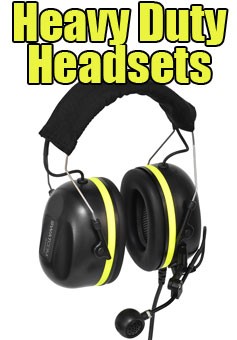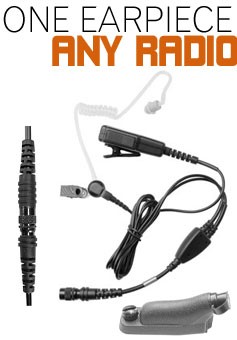
Parenthood comes with a never-ending list of worries and responsibilities. Among these concerns is the protection of our children's health and well-being, including the health of a child’s developing hearing ability. It is a silent, yet essential, aspect of their growth that often goes unnoticed until it’s too late.
In a bustling world filled with unpredictable explosions of sound – from the cacophony of city streets to the roar of a blender in the kitchen – the importance of safeguarding our children's ears has never been greater. With the aid of ear defenders, parents can provide a safe sanctuary against potentially harmful decibels. But how safe are these gadgets, really?
For new parents and families who value their children's auditory health, understanding the use of ear defenders, particularly for the youngest members, is paramount. This comprehensive guide explores the benefits and limitations of ear defenders for babies, shedding light on how to use and integrate them into a child's life safely and effectively.
Understanding the Need for Ear Protection
Noise-Induced Hearing Loss (NIHL) is a real concern for children. The World Health Organization (WHO) estimates that 1.1 billion teenagers and young adults are at risk worldwide due to the unsafe use of personal audio devices and exposure to damaging levels of sound from leisure activities.
For infants and toddlers, the risks can be even more significant. Excessive noise can not only impair the ability to learn and understand speech but also lead to long-term hearing problems. Common environments that pose threats include live sports events, air shows, and even daily household chores.
When to Use Ear Defenders
Ear defenders can be a crucial ally for parents in situations that exceed safe noise thresholds. Recommended instances for their use include:
- Frequent live music or events with loudspeakers
- Visits to noisy recreational settings, like shooting ranges or drag races
- While flying on an airplane
- Nearby operations of loud home tools, such as vacuum cleaners or drills
These instances often occur in everyday life, making the use of ear defenders not just an accessory for special events but a necessary safety measure.
How Ear Defenders Work
Ear defenders function by reducing sound exposure to the delicate inner ear structures. Typically, they work either by physical attenuation (soundproofing) or through active noise canceling technologies that produce sound waves that cancel out incoming noise.
Implementing Ear Defenders in Your Child's Routine
While the use of ear defenders seems straightforward, there are nuances in their application that can impact their effectiveness and the child's overall experiences. Here are several tactics to ensure your child can benefit from ear defenders without isolation from their surroundings.
1. Gradual Exposure with Regular Breaks
The implementation of ear defenders should not be a sudden and permanent measure. Instead, parents should introduce the concept gradually. Start with short periods of wear in noisy environments, allowing the child to become accustomed to the sensations and the reduced sound levels.
2. Establishing Control and Comfort
It's important that the child feels in control of their environment. Ensure ear defenders are accessible and show your child how to put them on and take them off. By giving your child the authority to manage their auditory experiences, you empower them to feel secure and comfortable when loud noises occur.
3. Sensitivity and Desensitization
In cases where children exhibit signs of auditory sensitivity, ear defenders can be part of a desensitization process. Begin with the use of defenders during less stressful events and gradually expose the child to louder noises without them. Over time, this can help desensitize the child to potentially triggering sounds.
4. Setting Realistic Expectations
It’s crucial to remember that ear defenders are not a cure-all for noise-related anxiety or fear. If your child is showing distress in certain noisy situations, using ear defenders should be part of a broader strategy that includes speaking with a pediatrician or audiologist.
5. Ensuring Proper Fit and Comfort
Ear defenders come in various sizes, shapes, and types designed to fit children of different ages. A snug and comfortable fit is essential for effective protection. Oversized or ill-fitting ear defenders not only compromise safety but can also be uncomfortable or distressing for the child.
Balance in the Use of Ear Defenders
While the benefits of ear defenders for protecting infant ears are clear, finding the balance between safeguarding hearing and natural environment engagement is essential. Excessive and prolonged use of ear defenders can potentially hinder a child’s social and sensory development.
The Role of Natural Noise in Child Development
Normal levels of environmental sound play a crucial role in the development of a child’s auditory senses. Effects range from language acquisition and speech development to social cues and situational awareness. Therefore, it’s important to manage and limit the use of ear defenders to necessary noise exposure levels.
Crafting a Comprehensive Strategy
Prioritize creating a comprehensive hearing protection strategy rather than relying solely on ear defenders. Strategies can include sound-quieting practices at home, selecting quieter environments when possible, providing regular hearing checks, and teaching children safe listening practices as they grow.
Tailoring the Experience to the Child
Every child is unique, and so are their responses to sound and the use of ear defenders. Parents must observe, evaluate, and adapt their approach based on the child's comfort and behavior. Stay attuned to your child's reactions and modify the use of ear defenders accordingly.
Conclusion
The use of ear defenders for babies and toddlers has the potential to be a significant asset in protecting their delicate hearing. However, it is vital to deploy these tools with knowledge and care. By understanding the need for ear protection, implementing a thoughtful usage plan, and maintaining a balance between protection and natural auditory engagement, parents can ensure their child’s hearing health is safeguarded without compromise.
With this comprehensive guide, new parents and safety-conscious families can confidently navigate the complex world of hearing protection and equip their child for a lifetime of safe and healthy listening. Be mindful, be vigilant, and be proactive – because when it comes to your child's hearing, the sound of silence is golden.
-

Childrens Ear Defenders
Our Children's Ear Defenders offer unparalleled hearing protection, comfort...



















